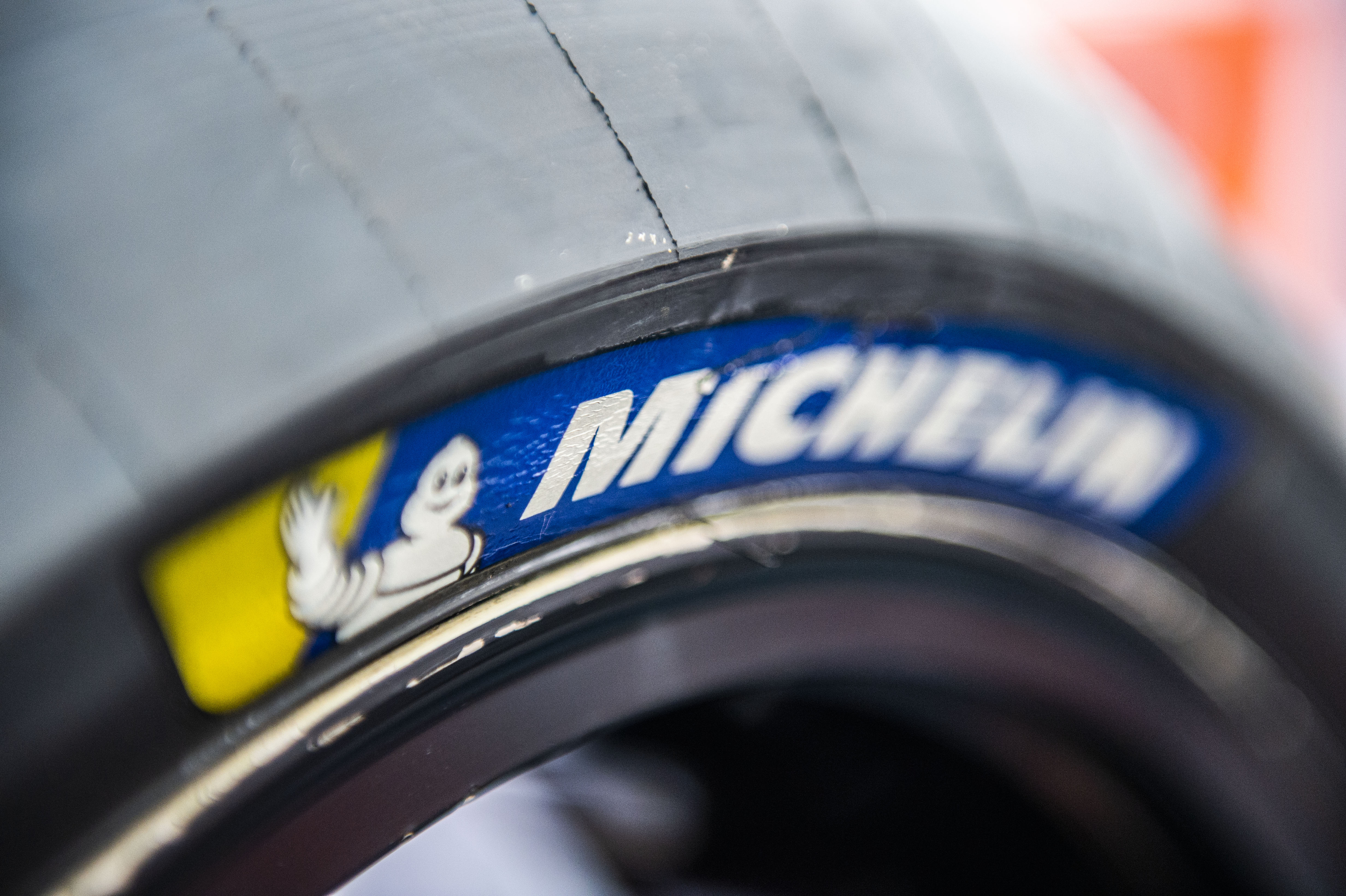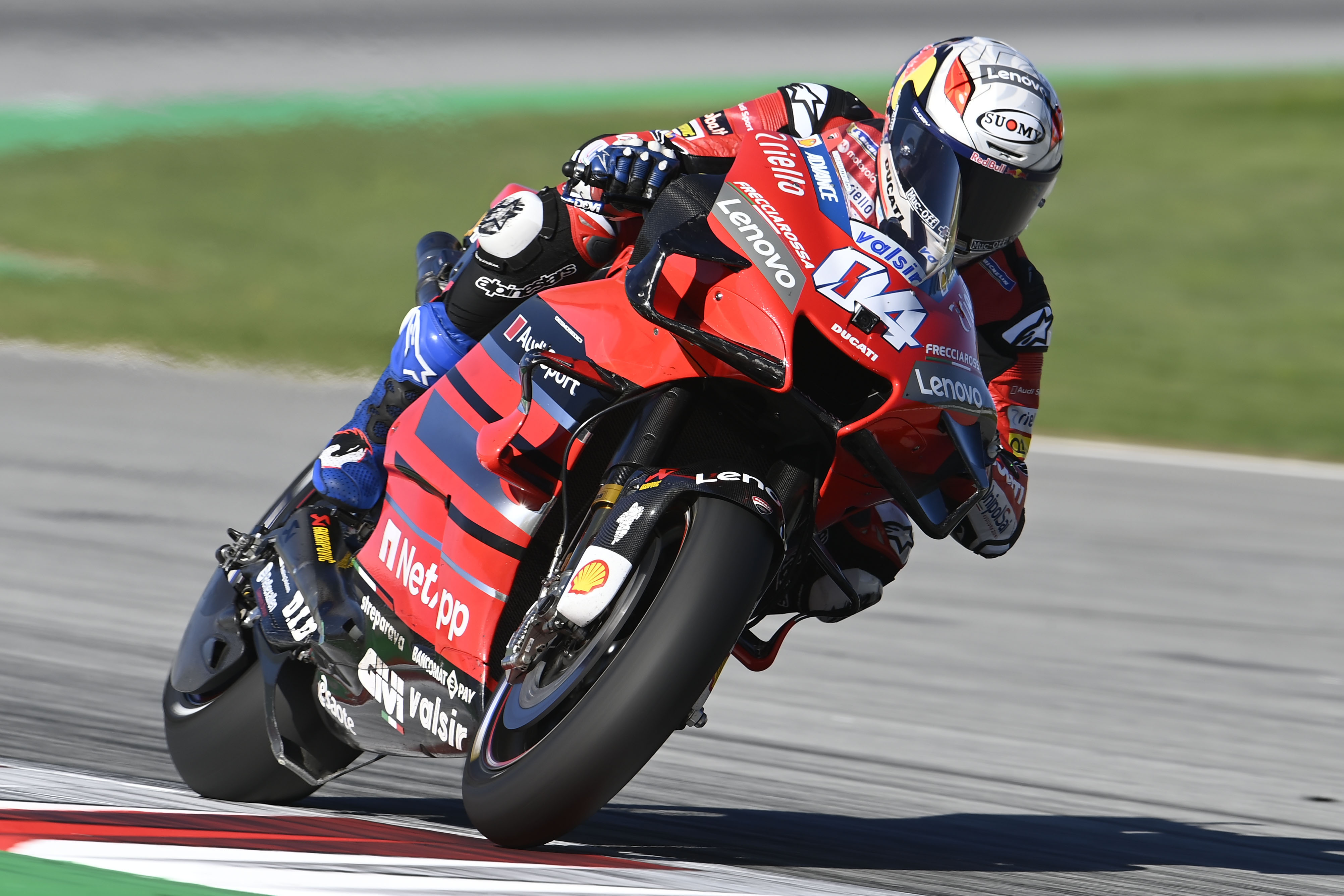until Abu Dhabi Autonomous Racing League

The opening day of practice for the Catalan Grand Prix at Barcelona’s Montmelo circuit has once again highlighted just how much the 2020 MotoGP calendar has thrown a curveball into the plans of teams, with cooler temperatures and high winds conspiring to upset the expected order after two sessions of free practice.
With track temperature barely climbing into the thirties and a high wind blowing all day, it was 2017 and 2018 race winners Ducati who suffered the most. Johann Zarco, riding the 2019 machine run by Esponsorama Racing, was the lone stand-out, finishing second behind Franco Morbidelli on combined times – but it was a gloomier day for the factory machines.

Jack Miller was the first of the 2020 bikes in a distant 12th, heading a quartet of Andrea Dovizioso (15th), Pecco Bagnaia (20th) and Danilo Petrucci (22nd).
Speaking afterwards, Miller says that the climatic conditions were what was causing the Ducati riders the most difficulty, though, rather than any specific problems with the GP20 bike. Never normally an issue at Montmelo despite the circuit’s location in a valley outside Barcelona, it seems that the autumnal conditions made their mark.
“It’s a combination of things to be honest,” Miller admitted. “The grip level is extremely low and the wind is high. You’d come out of the last corner and it would be trying to blow out onto the grass. You’d come across to prep for the end of the straight, but the wind coming off the grandstand would try and blow you off the track in the middle and in the braking zone.
“You just have to be gentle – I’ve never hung off the bike as much before. But if the wind comes down tomorrow like the forecast says it will, it’ll be OK. Low grip, but normal – a bit like Argentina.”
With the high wind came another problem for the Ducatis, too, according to Bagnaia; an inability to keep temperature in the tyres. That’s something else that has been further complicated by the new date, according to the Misano podium finisher, who says the tyre allocation doesn’t fit the conditions riders have found.
“The problem is that the tyres are not for these temperatures during this period,” he concluded at the end of the day. “They were chosen for temperatures 10ºC higher, so we are struggling.”
However, that was dismissed by Michelin boss Piero Taramasso, who says that the initial feedback from the entire grid is that while Michelin has changed what it brought to Montmelo, the riders are largely pleased with it.

“We haven’t finished analysing all of the data, but for us we’re happy that the allocation is good for this time of the year,” Taramasso said. “The truth is that on the rear, we went one step softer for the soft, medium and hard, so the allocation is softer for this time of the year. The fronts are working well and everyone can use them.
“We did the right thing to make it one step softer in the rear, and thelap times show this: we were faster in FP1 and FP2 than last year. The front covers all the conditions from 15ºC to 50ºC just in case because we had to choose the allocation before the season started, in May.”
But despite the poor ’20 Ducati results all round from the opening day of action and Bagnaia’s concerns about the tyre allocation, championship leader Dovizioso says that there’s not too much to worry about just yet as the forecast shows an improvement incoming.
“We found the biggest difference from Misano to here, the biggest you can imagine,” he admitted after two weekends of racing on the Italian circuit with its very different layout and positively tropical weather in comparison.
“And then in the afternoon there was a crazy wind. You had to take a lot of risk to be fast, and I didn’t have the feeling to do that. Hopefully tomorrow the conditions will be better to go faster, so I don’t think today was too important.”

It’s not the first time this year that we’ve seen similar effects on what was expected, with Jerez’s record-breaking high temperatures at the opening two rounds of the season also causing Ducati to suffer as the riders tried to find grip on a surface that was at times over 65ºC.
It’s likely to continue to make an impact as Europe moves closer and closer to winter. The next scheduled round of the series is at Le Mans, a track with a reputation for rain and cold temperatures even when MotoGP normally heads there in May.
Instead, with the series visiting the track in mid-October, it’s hard to imagine that the weekend won’t feature rainfall, and it could even have sessions brought into jeopardy if track temperatures fall too low to allow Michelin’s tyres to safely come into their operating window.

